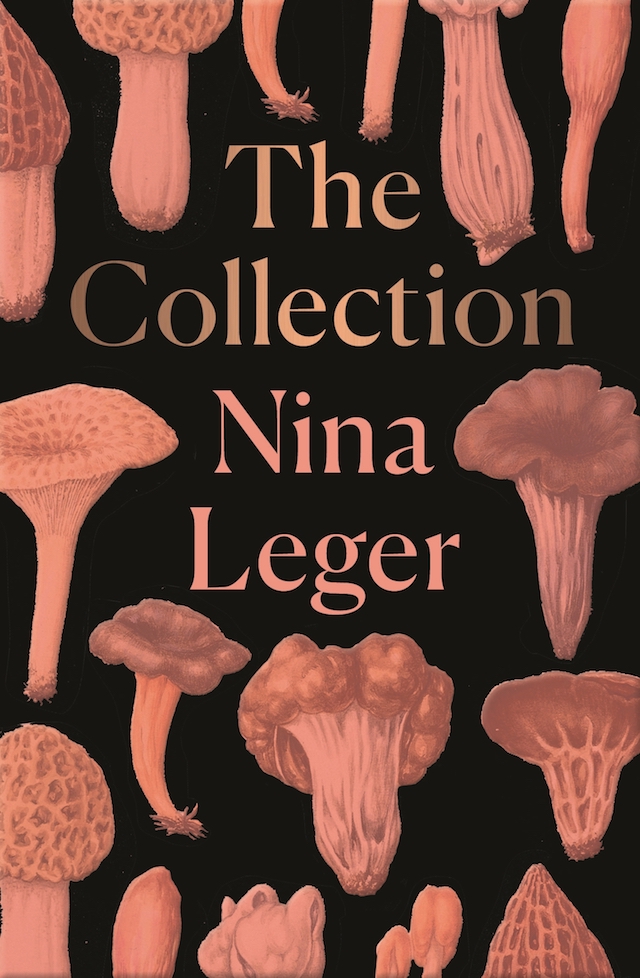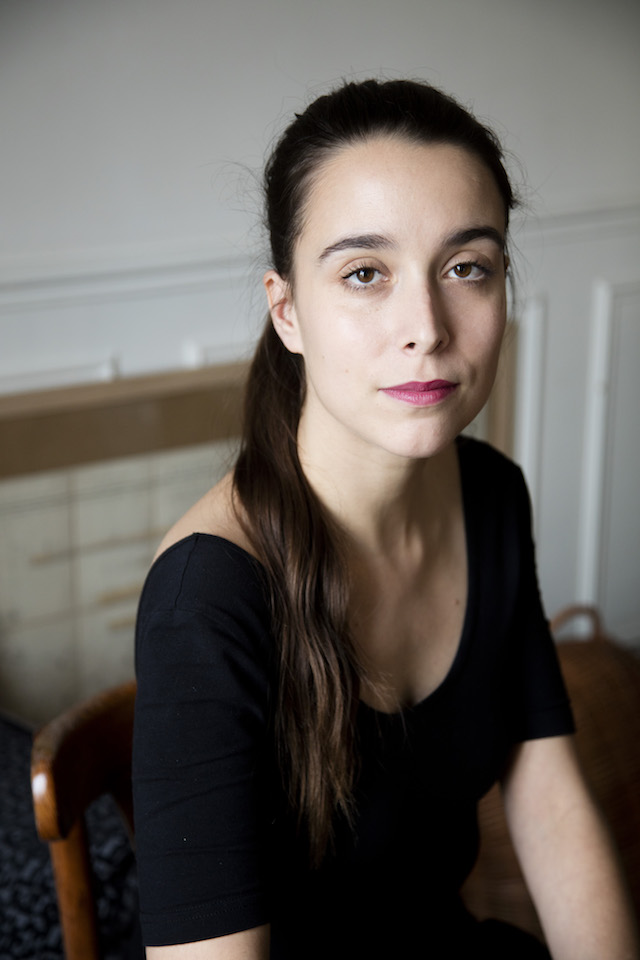Nina Leger discusses her recent award-winning novel and the need to create a female gaze unconcerned with male fantasy

“She slides it into her mouth.
She lets it grow heavy, take on warmth, breadth and shape, push against her palate, weigh upon her tongue.
Immobile lips, minute internal contradictions: her movements have grown less frenzied.
She thinks of paper flowers that unfold when placed on water.
She moves away, and contemplates the erect penis.”
‘She’ is Jeanne. She refuses to be labelled, lusted after, categorised, rationalised or pitied. In Nina Leger’s extraordinary Prix Anaïs Nin award-winning novel, The Collection (Mise en pièces), Jeanne is the amorphous antidote to the reductive male gaze that has plagued literature by trivialising and objectifying female sexuality. Moving restlessly to and from anonymous Parisian hotel rooms, the reader follows her world of conquest as she collects disembodied penis after penis for her fantastical “memory palace”. Leger takes great delight in resisting the traditional literary conventions that readers are usually spoilt with, the ‘whys’ and ‘becauses’ of a character and their actions. In the writer’s own words: “Saying nothing about her was the only way to let her be everything.” This depersonalised framework – together with language that is meticulous, detached, almost forensic in its penetration of desire, personas and puritanism – makes for writing that is constantly disarming.
Although the author was born in the Côte d’Azur resort town of Antibes, Paris is where she has spent most of her life. The city itself is arguably the second character in the book, acting as the concrete anchor to Jeanne’s ephemerality. Through The Collection, she has created a rich, new psycho-geography for the capital via the Metro line and red-neon lights of Pigalle, one which has been “ignored by the common Parisian imagination. It is almost as if, just like Jeanne, these places escape clichés.”
We recently spoke to Leger in-depth about the novel, in addition to female sexuality and male fantasy in literature, the proliferation of pornography, and what’s next.

Was there a germ of an idea or an exercise that led to the novel? What was the impetus to write this story?
I was appalled by many narrow and clichéd depictions of active female sexuality. I was wondering what would happen if a woman was given the freedom to act with the independence and certainty that has been reserved for men for so long; what would happen if her body was no longer placed under watch, but turned watcher; if her body was never described to the reader and that only the nudity of men, were made visible? What would happen if we supplanted the male gaze with a female gaze? This was the impetus of The Collection.
Why did you actively resist the literary conventions of ‘whys’ and ‘becauses’? Is Jeanne indifferent to our gaze or reading?
I carefully excluded any element which could have been read as an explanation for Jeanne’s attitude to sex. When it comes to women’s sexuality, explanation is often the first step towards disempowerment: to explain a woman’s sexuality is to say that what she does is not her choice, that it is only an effect resulting from causes which can be found elsewhere (in these things I playfully dubbed the “whys” and the “becauses”). Besides, explanation is often a tool of judgement and condemnation. I conceived of Jeanne showing the falsity of this demon of explanation which seizes us when we talk of female sexuality. Freed from the “whys” and “becauses”, Jeanne can act without having to justify anything, not even to the reader, not even to me.
Why did you use a depersonalised perspective on a traditionally intimate and personal subject matter?
This has to do with my refusal to say anything about Jeanne that could be used as an explanation of her attitude to sex. We (the reader and me) ignore her age, how she looks like, her profession, her social background and so on. Saying nothing about her was the only way to let her be everything.
A novel often wants to know and say everything about its character. Paradoxically, considering the theme of the novel, Jeanne resists the voyeuristic imperative. Except her sexuality, we know nothing about her. She escapes our “will to know”.
At one point Jeanne is severely disappointed with existing ‘female heroines’ in books – why do you think we still have a deficit of sexually liberated female protagonists? What can be done to correct this imbalance of representation?
I don’t think the problem is with characters but with authors who create and manipulate them. Literature is filled with women whose sexuality is (at least apparently) liberated. But these characters are rarely the beneficiaries of their own freedom. Most of the time, they fulfil a male fantasy, either because the author is a man, or because in writing a woman has sought to match a male fantasy. Let’s take a famous French pornographic novel, Histoires d’O by Pauline Réage (aka Dominique Aury). It depicts the wild masochist sexuality of a woman who entirely submits to male desires. Jean Paulhan — who was Aury’s lover — wrote the preface of the novel and he says: “At last a woman who admits it! Who admits what? Something that women have always refused till now to admit (…) that everything in them, even their minds, is sex.” Such an intrusive, violent, essentialist approach is unbearable. It is easy to reinforce the patriarchal order with sexually liberated women. This is why the depiction of sexually liberated female protagonists is not enough. The real question is: what do you do when you represent this liberation in a novel/a film/a play? Do you want to indulge in this order or to debunk it? Liberation is one thing but independence is another.
Things have changed a lot since Histoire d’O and they change faster and faster since #metoo happened, but the reason why it is taking so long is that we have to question all our representations, all our (mis)conceptions. We have to question, deconstruct and reconstruct our discourses from scratch to create the conditions of a truly liberated, autonomous, independent female gaze on sexuality.

You write about pornography with a wonderfully detached surrealism. What impact do you think this proliferation of images is having on us?
For a long time, people craved these images because they were so rare and hard to get. Now they are everywhere, this proliferation is usually considered an overwhelming aggression. Maybe we could see things differently and consider this excessive presence as an opportunity to change our relationship to these images, to stop giving them so much credit, to stop looking at them in awe and start playing with them. This is what I did when I wrote about porn in The Collection. I used these images, not as sulfurous readymade objects of desire, but as a material that literature could dispose of, distort and reinvent in its own way.
Paris seems to be a central character in the book – why did you choose it as your setting?
Paris did not come as a choice: it was intertwined in the very idea of Jeanne. Of course the reason is that I have lived in Paris most my life so it’s the geography I know best. Jeanne walks through places located in my own neighborhood, in the 13th arrondissement, she even walks up my own street twice! I chose these places because I know them intimately and because they have been ignored by the common Parisian imagination. It is almost as if, just like Jeanne, these places escape clichés. Besides, a lot of things are close to abstraction or fantasy in this novel, so I needed a very concrete, very material setting to anchor them. The geographic realism of the novel is a condition of its fantasies.
In the introduction to Concrete Island Ballard notes: “Marooned…on a traffic island, we can tyrannise ourselves, test our strengths and weaknesses, perhaps come to terms with aspects of our characters to which we have always closed our eyes.” It seems that there are similarities to Jeanne and Maitland (both arguably marooned, testing strengths and weakness) – but why did you choose to reference it?
The presence of science-fiction and references to Ballard and Gibson in The Collection is a result of Jeanne growing tired of the treatment of female sexuality in the novels she reads. Instead, she decides to read “stories of reinforced concrete, of petrified forests, of chrome cockpits speeding along the rollercoaster of autoroute interchanges”. To get rid of the psychological analysis that fill novels dealing with female sexuality, she sinks in sci-fi novels where “interior motives are reduced to silence, annihilated in the collapse of ancient worlds that crushes all futures with it”. The reference to Gibson and Ballard in the book is a kind of follow-up to the reflection about the “whys” and “becauses”: it’s a way to get rid of the invasive rhetoric of explanation. What attracted me to Concrete Island is the island itself, the fascinating spatial configuration Ballard invents and describes rather than the hero he abandons in between the highways.
Were there any other artistic or literary influences that informed or shaped the novel?
In a very unusual way (unusual to me I mean), I wrote The Collection against novels/artworks/discourses I disagreed with rather than with novels/artworks/discourses I admired. Still I can think of two authors I enjoyed reading when writing: Guillaume Dustan’s auto-bio-pornographic trilogy and Marguerite Duras’ micro-novel The Man Sitting in the Corridor. Dustan’s straightforward description of his own sexuality and Duras’ way of being at the same time dreamlike and crude stunned me.
What do you have planned for your next project?
With Mise en pièces, I wanted to find a way of talking of female sexuality. What I had to say was very specific and now that it’s done, I will move on, especially because with sex, people suspect the author to play the lurid card only to get attention. The further I go, the better it will be for the sake of The Collection. So I decided to follow the geographical impulse that is already perceptible in this novel and to write about a place, a weird place located in the South of France and called Sophia Antipolis. It is a very Ballardian place of futuristic buildings lost in the forest. I intend to write a topographical novel. This will be another way to escape the tyranny of the biographical.
The Collection is published by Granta Books